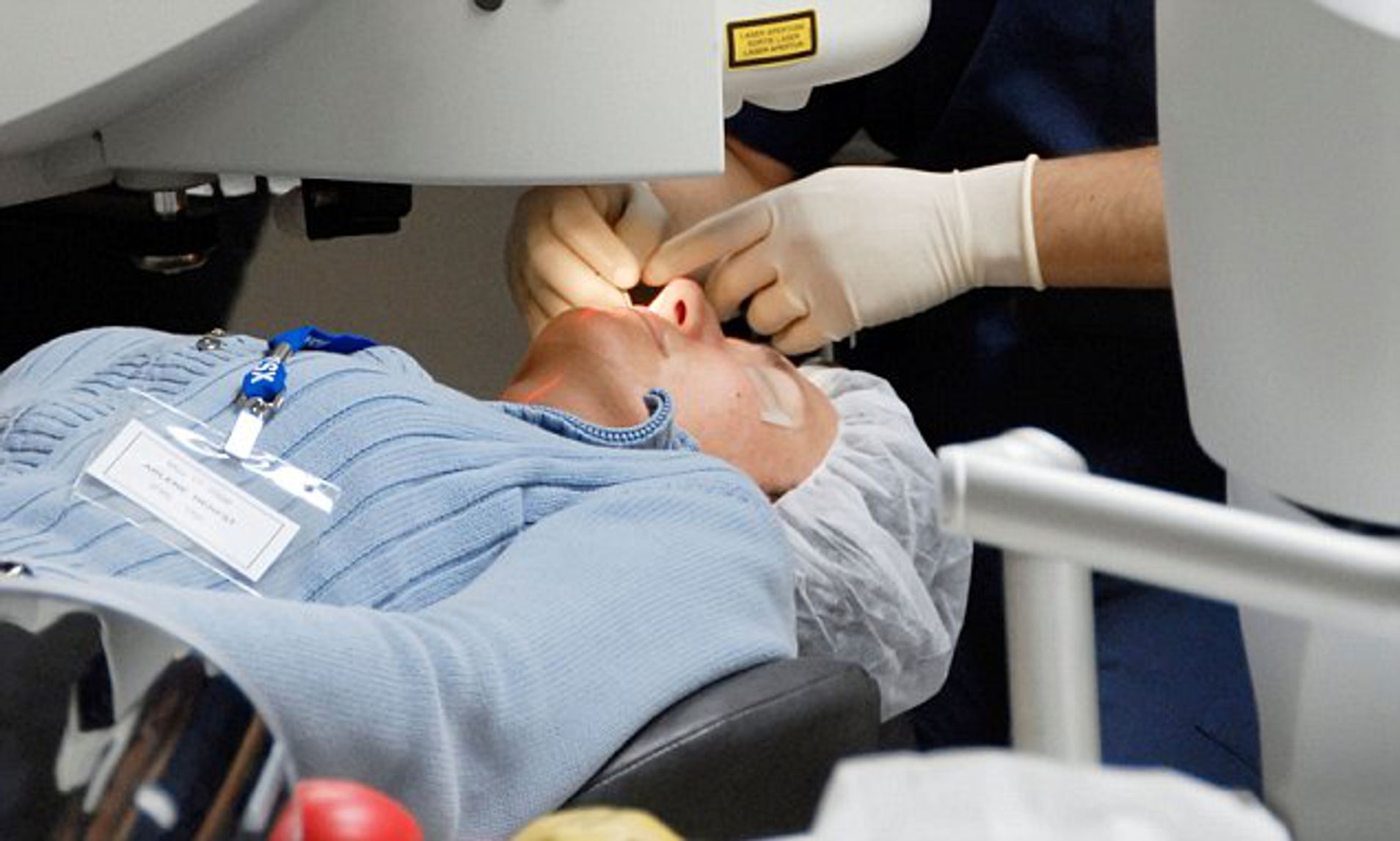Seeing Clearly Now: What 1 Million LASIK Patients Taught Us About Regret (or the Lack of It)

Introduction: Clear Vision, Clear Decisions
Picture this: You roll out of bed, blink a few times, and see the world perfectly—no foggy lenses, no fumbling for glasses. Just instant, crisp clarity.
That’s the daily reality for over a million people who’ve chosen LASIK, one of the most popular laser eye surgeries available today. What started as a futuristic-sounding procedure decades ago has now become routine. And if there’s one surprising truth about LASIK? It’s this: Most people don’t regret it—not even a little.
In fact, the overwhelming majority say they wish they’d done it sooner. So what makes LASIK such a no-regrets kind of decision? Let’s take a closer look.
Why It’s More Than Convenience
It’s easy to assume that LASIK is just a convenience thing—about ditching glasses or skipping the contact lens routine. But talk to real patients, and the story goes much deeper.
Laser eye surgery offers freedom. It means no more foggy glasses in the winter, no more scratched lenses or torn contacts, and no more worries about losing your vision tools while traveling or swimming.
See more: Sleep Study Melbourne Cost: What You Should Know
Then there’s the emotional layer. People report a serious boost in confidence. Whether it’s wearing makeup without hiding behind frames, hitting the gym without lenses drying out, or going on adventures without backup supplies—LASIK empowers people to live uninterrupted.
And let’s not forget the cost. While the upfront expense might feel like a leap, LASIK often ends up paying for itself when you factor in years’ worth of glasses, contact lenses, cleaning supplies, and eye exams. That’s money saved—and stress avoided.
Life After LASIK: The Glow-Up is Real
Ask someone who’s had LASIK what surprised them the most, and you’ll often hear stories that sound almost too good to be true.
One woman described the first time she woke up and saw her alarm clock—without reaching for her glasses. A college student shared how hiking became a whole new experience without fogged lenses or itchy contacts. A young father explained how bedtime routines with his toddler became easier because he didn’t have to fumble with glasses at night.
These are small moments, yes—but they add up to a big change. Psychologically, patients report feeling more independent and in control. The stress of always needing a “vision plan” disappears. And with that comes a new sense of ease and confidence.
The Tech Behind the Clarity: Simple and Smart
Let’s quickly demystify how LASIK actually works—because it sounds more intimidating than it is.
In short, laser eye surgery reshapes the surface of your eye to correct the way light enters it. This fixes common issues like nearsightedness, farsightedness, and astigmatism. The procedure is quick—often under 15 minutes per eye. And yes, it’s painless (numbing drops take care of that).
Most patients notice immediate improvements, with full clarity developing over a few days to weeks.
What’s especially reassuring is the technology. Today’s lasers are incredibly precise, often guided by digital mapping that’s unique to your eye—kind of like a fingerprint. That means tailored results with fewer risks.
The safety record? Outstanding. Millions of successful procedures later, LASIK remains one of the most thoroughly studied elective surgeries in the world.
When LASIK Makes the Most Sense
So how do you know if it’s your time?
Most ideal candidates are between their early 20s and late 40s. That’s the window when vision is typically stable, and the eyes respond best to correction. If your prescription hasn’t changed in over a year, that’s a strong sign you’re ready.
LASIK is great for correcting:
- Nearsightedness (seeing up close, but not far)
- Farsightedness (seeing far, but not close)
- Astigmatism (blurry or distorted vision from an irregular cornea)
If these sound familiar—and you’re otherwise healthy—there’s a good chance you’re a strong candidate.
And it’s not just about vision quality. Many people decide on LASIK because they’re starting a new chapter: a new job, a move, a lifestyle shift, or even becoming a parent. The desire for simplicity often drives the decision.

What About Risks? Let’s Be Honest
As with any surgery, laser eye surgery isn’t completely risk-free. The good news? Complications are rare, and most side effects are mild and temporary.
Some people experience:
- Dry eyes (usually manageable with drops)
- Glare or halos at night (often fades in a few weeks)
- Light sensitivity (short-term)
That’s why an in-depth pre-surgery consultation is so important. A professional eye doctor will check your eye health, corneal thickness, tear production, and overall stability of your vision. It’s like a thorough fitness test before a marathon.
And here’s the key: If you’re not a good fit, they’ll tell you. LASIK isn’t a one-size-fits-all procedure, and reputable specialists won’t recommend it if it won’t serve you long term.
The Emotional Side: What 1 Million Patients Taught Us
So what did 1 million LASIK patients teach us?
That vision isn’t just physical—it’s deeply emotional. People don’t just walk away with clearer eyesight; they leave with lighter hearts.
Patients often talk about:
- A sense of relief—like they’ve taken control of something that once controlled them.
- A boost in confidence—no more hiding behind frames or worrying about contacts falling out.
- A feeling of ease—less planning, less stress, and more spontaneity.
And the one phrase we hear over and over again?
“I wish I’d done it sooner.”
Conclusion: Is It Your Time to See Clearly?
Choosing laser eye surgery is more than just a medical decision. It’s a lifestyle choice. One that opens up possibilities—more freedom, more confidence, more clarity.
Sure, the idea of surgery on your eyes can feel intimidating. But when you talk to people who’ve done it, you rarely hear regret. Instead, you hear stories of transformation.
If you’re tired of blurry mornings, frustrated with glasses, or simply ready for a new chapter, this might be your sign. You deserve to see the world clearly—not just physically, but emotionally and mentally too.
Take the first step. Ask questions. Get a consultation. You may find that your new favorite view is the one through your own eyes.
4o
